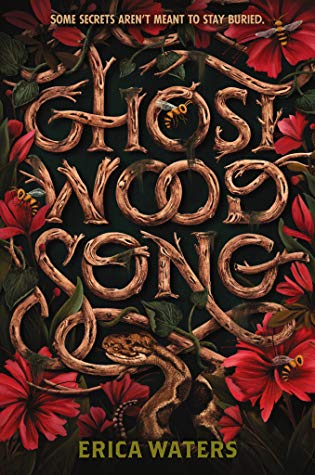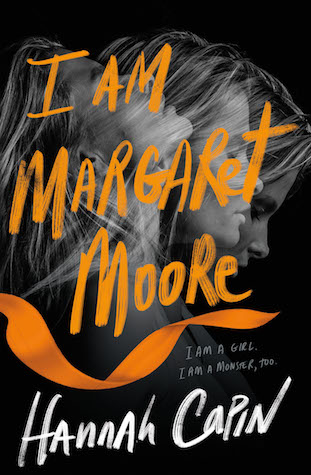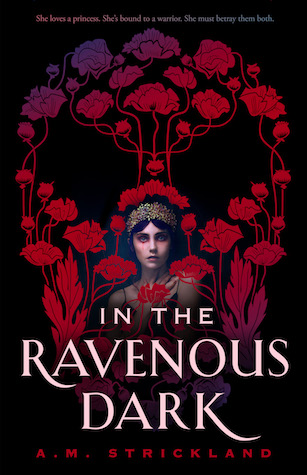 TL;W[on’t]R[read the review]: A hauntingly gorgeous Southern gothic world, but a somewhat unsatisfying conclusion means the haunting ends a bit too soon
TL;W[on’t]R[read the review]: A hauntingly gorgeous Southern gothic world, but a somewhat unsatisfying conclusion means the haunting ends a bit too soon
Content warnings: wasps, snakes, violence/murder, brief mention of [off page] attempted sexual assault, homophobia/biphobia, child abuse
Summary [courtesy of Goodreads]: Shady Grove inherited her father’s ability to call ghosts from the grave with his fiddle, but she also knows the fiddle’s tunes bring nothing but trouble and darkness. But when her brother is accused of murder, she can’t let the dead keep their secrets. In order to clear his name, she’s going to have to make those ghosts sing.
The first three-fourths of this book were an immersive delight–heavy and heady stuff, but it was a world I felt like I knew, thanks to Erica Waters’ atmospheric writing. It made me think of the 2000 indie film Songcatcher and its accompanying bluegrass soundtrack, a CD I nearly wore out in high school but hadn’t thought of in years. (It’s a weird, slow film that doesn’t fully hold up and is almost impossible to find, but it was Emmy Rossum’s debut playing an Appalachian singing prodigy, and it tries to be really progressive for its time with a lesbian teacher couple [who still gets run out of town by bigots].)
Waters’ book made me want to find the nearest wood and go out wandering in the middle of a particularly windy night. It made me miss living in those rural backwaters that, in reality, I couldn’t wait to get out of when I was actually living there. In short, it made me massively nostalgic while also weaving a gorgeous horror-fantasy tale that I could not put down.
However, the last quarter of the novel fell apart for me, or rather perhaps it came together too neatly, and too quickly. Our intrepid fiddler Shady Grove makes ever-less-sensical decisions, and our elaborately-built magic system snaps back into a bounded network whose edges are all too clear. By the end, there’s not much mystery left, and what mystery DOES remain rings a bit hollow, at least to my ear. I do think there are good, solid thematic reasons for much of the conclusion, but the execution left me almost bereft, given the enchanting material that came before it.
As ever, I can’t fully explain myself without venturing into
SPOILER TERRITORY
The novel makes a case for entry in this weird blog series pretty early on, focusing on Shady Grove’s unresolved grief and anger and the way it draws her to the enchanted fiddle at the center of the story. I loved how emotional processing emerged as one of the core themes and lessons over the course of the novel, though I will say that the anti-anger conclusion was less than satisfying for yours truly. Perhaps it’s obvious by now, but YA novels that elevate young women’s (or nonbinary folks’) anger as empowering and useful are my jam, and I’m almost always let down by books that take a more traditional, less ‘blow it all up’ approach. Here, the intergenerational haunting at the novel’s core is undone not via anger or violence but via a Labyrinth-style “you have no power over me” assertion and a bittersweet moving on. I get it, in a way: this lesson on how to process intergenerational trauma is empowering in and of itself, but I do wish it didn’t have to come at the cost of schooling Shady Grove away from her galvanizing anger.
In this novel, anger manifests as hatred, and hatred is tied to all-consuming grief in fascinating and troubling ways. Both emotions are coded as addictive in this world, as Shady Grove’s compulsive attraction to her dead father’s fiddle, much like her father’s obsession before her, is fed by and feeds her heightened negative emotions. It’s an interesting idea, though I do think the novel muddles this extended metaphor, particularly as Shady’s brother Jesse comes under fire intermittently for pill use and sales (actual addictive substances), only to have that plotline evaporate toward the end.
Speaking of the end: it made me sad. While it did nuanced things with grief and acceptance, it did it in a rushed and un-subtle way that, to me, undercut the exquisite buildup that had come before. Instead of an intricate mythology behind the haunted fiddle, we get a bare-bones story that ties the magic up into only 3 generations: Shady’s grandfather, who has haunted his family via the fiddle since he died, Shady’s father, who created the fiddle out of magical wood and even more magical grief (which…we don’t really get an explanation there), and Shady Grove herself, haunted by the fiddle, her grandfather, and her own grief. Basically, the magic is simultaneously explained in too much detail and not nearly enough. Things like the spectral-turned-all-too-real wasps that torment the characters have a clear historical analogue (Shady’s aunt died from a wasp swarm as a child), while things like the magic wood the fiddle came from, or the transmogrifying power of hatred and grief, are never really explained. It’s a let down, and while I do understand why the novel pulls focus onto the power of parental abuse and its aftereffects, I wanted more.
One thing I did appreciate toward the end was the way toxic masculinity played into the story very clearly. Murderer (and would-be rapist) Frank oozes hyper-masculine danger throughout, and it’s satisfying to see his menace so clearly destroyed. His heel-turn was perhaps a bit over-the-top, but I’d say it’s almost impossible to be hyperbolic about the way toxic masculinity can derange and destroy. It was a nice counterpoint to Shady’s anger, too.
(It was wildly unrealistic to me that the cops in town, one of whom was bff’s with Frank and had covered up his crimes before, believed Shady’s family against Frank by the end, but…at least it meant we didn’t have tedious gaslighting-by-cop, my VERY LEAST FAVORITE arc, so that was something.)
As a couple of quick side notes, while I enjoyed the side characters in this book a lot, I felt like their characterization sent uneven messages. Cedar, Shady’s male love interest and a white, rodeo-loving banjo (or was it mandolin?) prodigy, turns out to be a perfect ride-or-die friend and then romantic partner, though I spent the entire time assuming the Scream hypothesis would hold and he’d be outed as a villain. It was one moment where I wasn’t thrilled to be wrong? Particularly because while Shady is initially leery of his cowboy stylings, she falls for him fast, and the book never really unpacks the potential threat of white masculinity that his world, and the world of bluegrass more generally, can pose. (See all of history but most recently the now ex-banjo player of Mumford and Sons outing himself as pro-fascist via Twitter.) Waters’ book doesn’t really discuss rural whiteness or the way it AND bluegrass have fraught, foundational relationships with white supremacy, which is a shame because I think it would’ve worked great in a book about guilt and intergenerational trauma. (The only characters of color are Shady’s close friend Orlando, his family, and a few distant friends, and while their lives are somewhat well-developed, at least compared to a lot of white-authored YA with few POC characters, we never get a sense of how differing from the white ‘default’ plays out in this world. White gets to stay the default, under-examined and under-explored. Waters does a much better job with this, imo, in her latest book The River Has Teeth, which I’ll be reviewing next week.)
Copaganda rating: low to inadvertently moderate [There’s a crooked cop, though this isn’t really resolved, and cops help ‘save the day’ in the end.]


